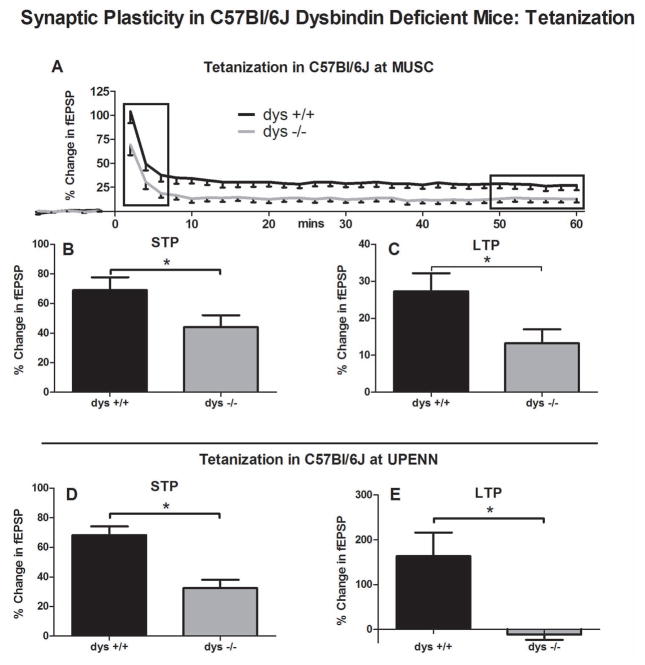Figure 3.
Synaptic plasticity in dysbindin deficient mice following tetanization on the C57Bl/6J background. A) The experiment present in Figure 1 was repeated on the C57Bl/6J background on the DBA/2J background with dys +/+ and dys −/− mice. ANOVA revealed a significant interaction between genotype and time (p=0.03). B) A student’s t-test showed a significant differences between dys +/+ and dys −/− in the average normalized differences for the first 5 minutes (STP) of each recording (p=0.03). C) A student’s t-test revealed significant differences between dys +/+ and dys −/− in the average normalized differences for the last 10 minutes (LTP) of each recording (p=0.02). D) The basic finding presented in figure one was repeated independently at the University of Pennsylvania. Following tetanization (50–60 min), significantly less STP (p=0.004) and E) LTP (p=0.047) were observed in dys −/− compared to dys +/+ mice.

